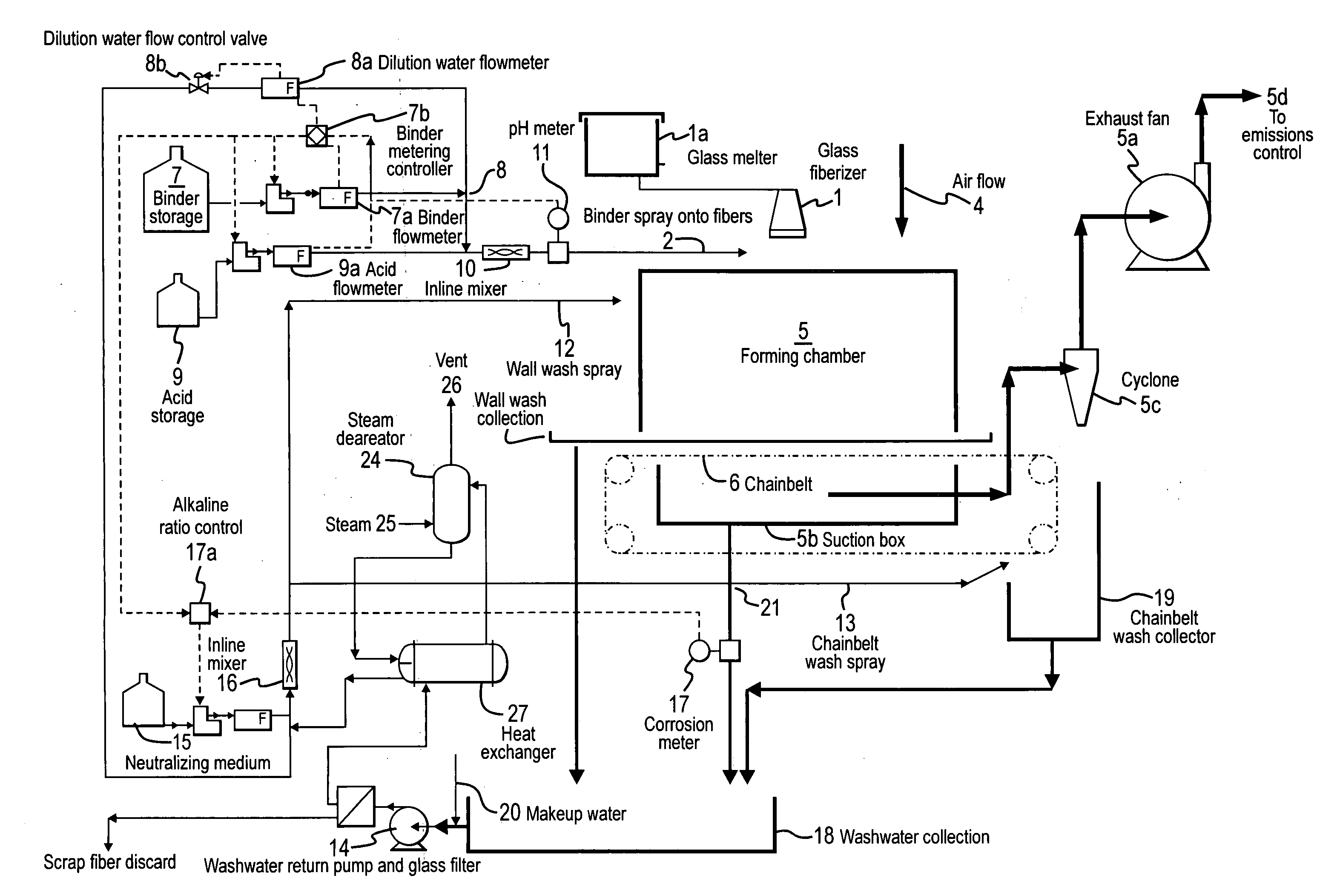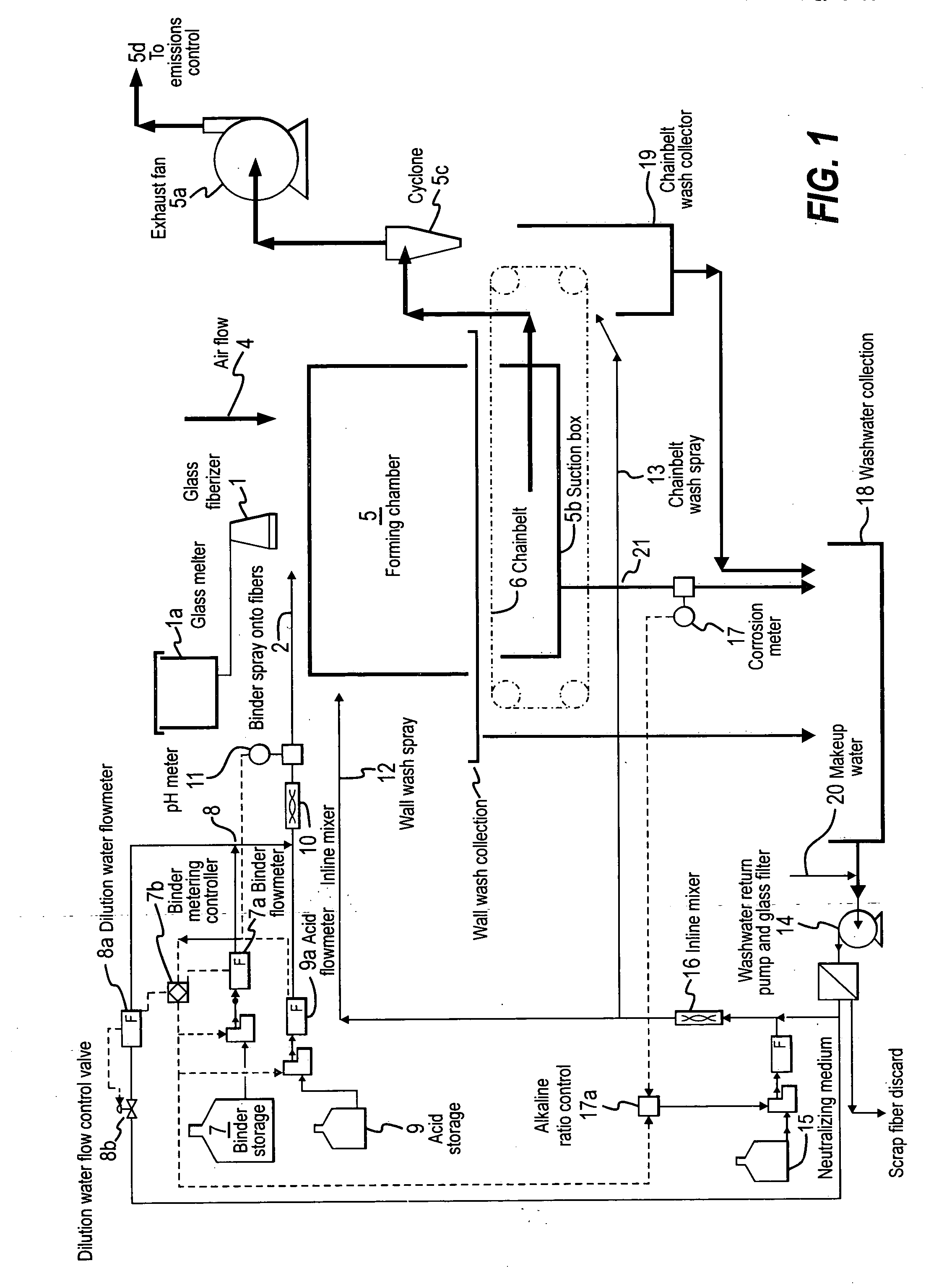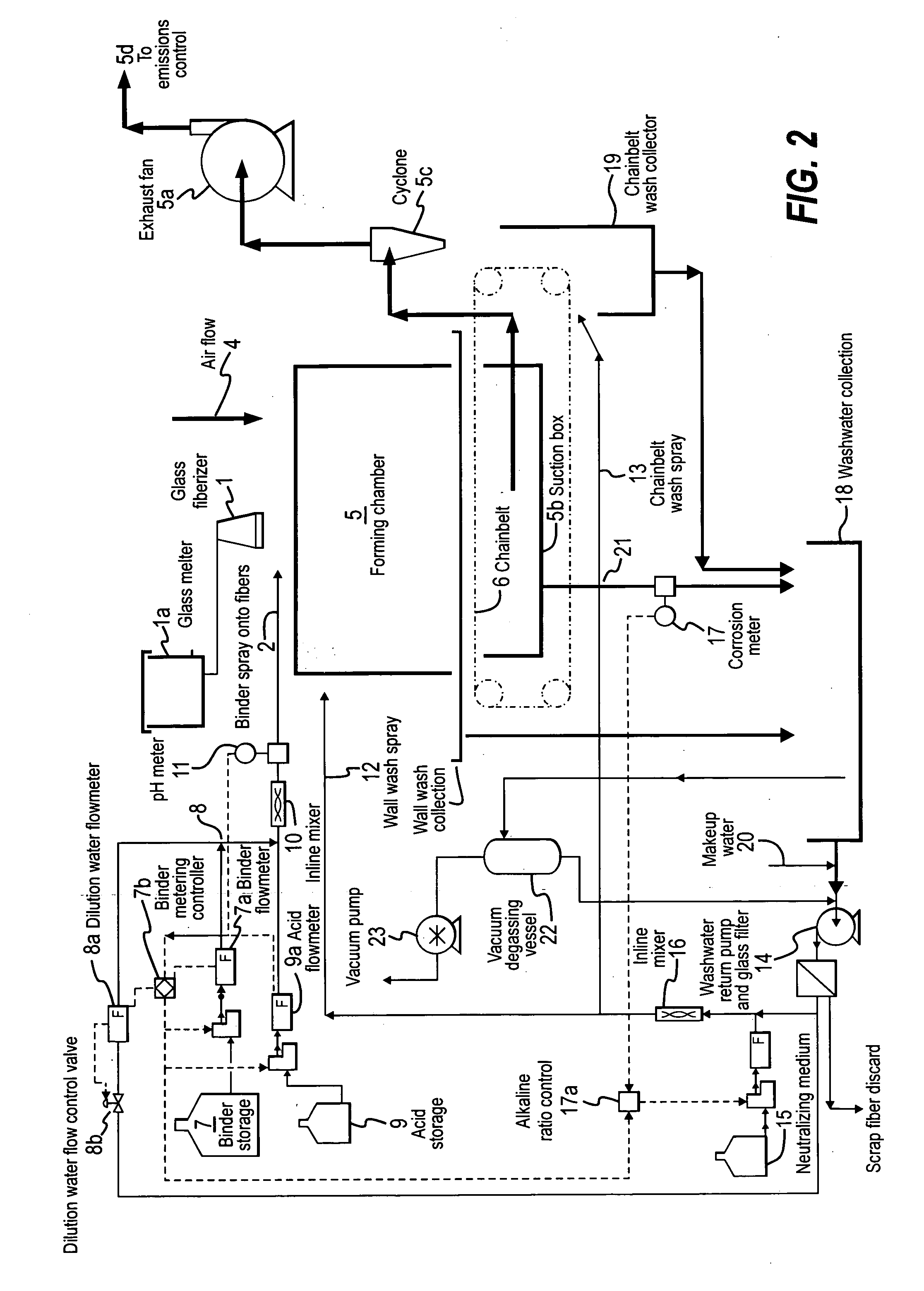Method for reducing corrosion
a technology of corrosion reduction and corrosion prevention, applied in the field of corrosion reduction, can solve the problems of reducing the useful life of equipment, and reducing the use of environmental control equipment, so as to reduce the reliance on environmental control equipment, reduce the amount of downtime, and strong mechanical properties
- Summary
- Abstract
- Description
- Claims
- Application Information
AI Technical Summary
Benefits of technology
Problems solved by technology
Method used
Image
Examples
Embodiment Construction
[0006] A first aspect of this invention is a method for reducing corrosion in a fiberglass manufacturing process, said method comprising: (a) providing a glass fiber binding system comprising a feed stream comprising a polymeric binder, water, and a strong acid, wherein said binder comprises at least one of a polyacrylic acid polymer or copolymer, and wherein the pH of said feed stream is less than 4; (b) spraying said feed stream onto glass fibers in a forming chamber; (c) providing a wash water system comprising at least one wash water process line, wherein said wash water system receives recycled water from said forming chamber through said wash water process line; (d) collecting said wash water in at least one wash water collection container; (e) positioning a corrosion meter probe to measure the rate of corrosion in at least one of a wash water line leading to said wash water collection container, a wash water line leading from said wash water collection container, or the insid...
PUM
| Property | Measurement | Unit |
|---|---|---|
| corrosion potential | aaaaa | aaaaa |
| corrosion rate | aaaaa | aaaaa |
| corrosion rate | aaaaa | aaaaa |
Abstract
Description
Claims
Application Information
 Login to View More
Login to View More - R&D
- Intellectual Property
- Life Sciences
- Materials
- Tech Scout
- Unparalleled Data Quality
- Higher Quality Content
- 60% Fewer Hallucinations
Browse by: Latest US Patents, China's latest patents, Technical Efficacy Thesaurus, Application Domain, Technology Topic, Popular Technical Reports.
© 2025 PatSnap. All rights reserved.Legal|Privacy policy|Modern Slavery Act Transparency Statement|Sitemap|About US| Contact US: help@patsnap.com



